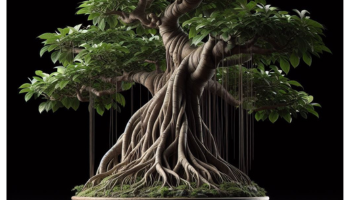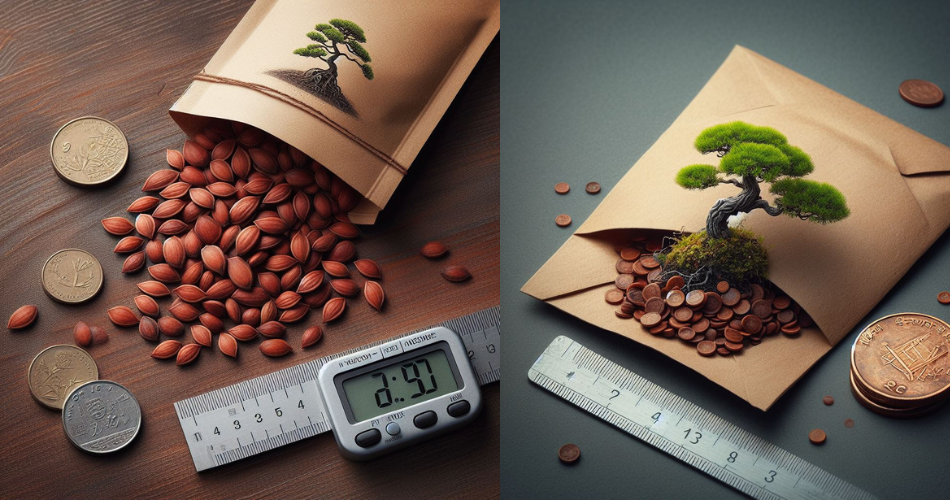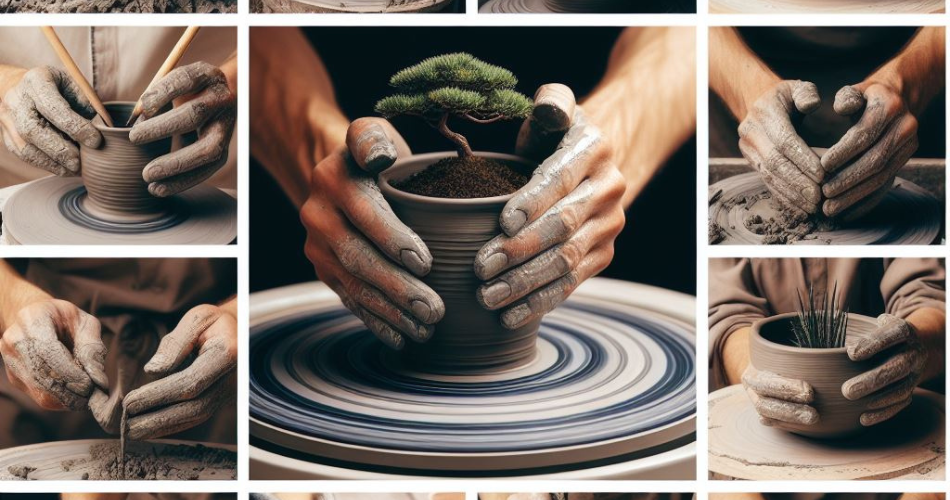
Spider plants, scientifically known as Chlorophytum comosum, are popular houseplants known for their graceful arching leaves and air-purifying qualities. These resilient plants are not only aesthetically pleasing but also relatively easy to care for, making them perfect for both beginner and experienced plant enthusiasts. Whether you are a seasoned plant lover looking to expand your collection or a novice wanting to introduce greenery into your living space, this comprehensive guide will provide you with all the necessary information on how to take care of spider plants. From understanding their needs and creating the ideal environment to watering, lighting, fertilizing, and handling common pests and diseases, this article will equip you with the knowledge and tips to ensure the health and vitality of your spider plants.
1.1 What is a Spider Plant?
Picture this: you walk into someone’s house and your eyes are immediately drawn to a stunning green beauty cascading from a hanging pot. That, my friends, is the spider plant. Also known as Chlorophytum comosum (but let’s stick with spider plant, shall we?), this plant is a popular choice for both beginner and experienced plant enthusiasts.
1.2 Benefits of Having a Spider Plant
Aside from being a gorgeous addition to your home decor, spider plants offer a range of benefits. First off, they are excellent air purifiers, so they’ll keep your indoor air fresh and clean. Plus, they’re non-toxic to pets, so your furry friends can roam around without you having to worry. Spider plants also have this charming ability to produce baby spider plants, or “spiderettes,” which you can propagate and share with your plant-loving friends. It’s like the plant version of a joyful family reunion!
2. Understanding the Spider Plant’s Needs
2.1 Watering Requirements
Ah, the eternal question: “How often should I water my spider plant?” Well, my friend, the key is to let the top inch of the soil dry out between waterings. Stick your finger in the soil (wash your hands first, please) and if it feels dry, it’s time to give your plant a drink. But remember, moderation is key – overwatering can be just as damaging as underwatering.
2.2 Light Requirements
Just like humans, spider plants have their own preference for lighting. They thrive in bright but indirect light, so find them a cozy spot near a window where they can bask in the gentle rays of the sun without getting burned. Too much direct sunlight can scorch their leaves, and we don’t want our spider plant to feel like it’s on a tropical beach vacation gone wrong, do we?
2.3 Temperature and Humidity Preferences
Spider plants are quite adaptable when it comes to temperature, but they prefer a moderate range between 55°F and 80°F (13°C and 27°C). So, make sure you’re not subjecting them to extreme temperatures, like a sauna or a walk-in freezer. As for humidity, they can handle different levels, but if you live in a dry climate, consider misting their leaves occasionally to give them that refreshing spa treatment.
2.4 Soil and Potting Mix
The soil you choose for your spider plant should be well-draining and rich in organic matter. Think of it as creating a comfortable, cozy home for your plant. A mixture of potting soil, perlite, and peat moss will do the trick. Avoid heavy, water-retaining soils that can suffocate the roots. Let’s keep those roots breathing, shall we?
3. Choosing the Right Environment for Your Spider Plant
3.1 Indoor vs. Outdoor Placement
Indoor or outdoor? That is the question. Spider plants can thrive both indoors and outdoors, depending on your climate. If you live in a region with harsh winters, it’s best to keep them indoors where they can be shielded from frosty conditions. Outdoor placement is ideal for those lucky folks enjoying a mild climate year-round. Although, be ready to welcome your spider plant back inside if old man winter pays a visit.
3.2 Finding the Ideal Location
When it comes to finding the perfect spot for your spider plant, think about its lighting needs. Remember, bright but indirect light is the way to go. A well-lit living room, bedroom, or even a bathroom with a window can be the ideal place for your green friend. Just make sure they’re not getting too cozy with a heating vent or being tucked away in a dark corner. Let’s keep them feeling like the star of the show.
3.3 Considerations for Different Seasons
Ah, the ever-changing seasons! Spider plants, being the adaptable creatures they are, will have some different needs depending on the time of year. In summer, they may need more water due to increased evaporation, while in winter, they might require less frequent watering as growth slows down. Keep an eye on your spider plant and adjust its care routine accordingly. We all need a little extra TLC sometimes, especially during winter.
4. Watering and Moisture Requirements
4.1 Determining the Right Watering Schedule
Remember the golden rule: let the soil dry out between waterings. Depending on your indoor conditions, this can mean watering once a week or every two weeks. It’s always better to underwater than overwater, as spider plants are quite forgiving. So, be patient, keep an eye on the soil moisture, and trust your green thumb instincts.
4.2 Using the Correct Watering Technique
When it’s time for a little hydration session, pour water into the soil until it starts to drain from the pot’s drainage holes. Let it have a nice drink, then discard the excess water. You don’t want your spider plant sitting in a puddle of water; that’s not a spa treatment they signed up for.
4.3 Avoiding Overwatering and Underwatering
Overwatering can lead to root rot and a sad, droopy spider plant. Imagine walking into a room full of wilted plant leaves. It’s like a plant funeral, and we don’t want that. On the other hand, underwatering can cause dry, crispy leaves that will make your spider plant feel like a desert wanderer. Find that sweet spot of moisture, my friends.
4.4 Managing Moisture Levels in the Surrounding Environment
Remember, spider plants appreciate a bit of humidity, so if your indoor environment is on the dry side, consider misting their leaves occasionally or placing a tray of water nearby to increase the moisture in the air. They might even thank you with some extra spiderettes.
And there you have it, my fellow plant lovers – a comprehensive guide to taking care of your spider plant. Embrace the joy of raising these green beauties, and remember, a happy spider plant means a happy plant parent. Happy planting!
5. Providing Adequate Light for Spider Plants
5.1 Understanding the Light Preferences of Spider Plants
Spider plants may seem all cool and laid-back, but they do have their preferences when it comes to lighting. These green beauties thrive in bright, indirect sunlight, just like a diva who loves her spotlight but doesn’t want to get burned.
5.2 Choosing the Right Amount of Indirect Sunlight
Okay, so we know spider plants love indirect sunlight. But how much is too much, and how little is too little? Think of it like finding the perfect balance between a cozy shaded nook and a sunny spot by the window. You want to place your spider plant somewhere it can bask in the glow of bright, indirect light without being exposed to harsh, direct sunlight.
5.3 Supplementing with Artificial Light
Let’s face it, not all of us have the luxury of well-lit living spaces or sun-drenched windowsills. But fear not! If your spider plant isn’t getting enough light naturally, you can give it a helping hand with some artificial light. Just like a home gym for your plant, you can set up a simple grow light to provide the necessary rays for its growth and happiness.
6. Fertilizing Spider Plants for Optimal Growth
6.1 Understanding the Nutritional Needs of Spider Plants
Spider plants may look low-maintenance, but they have their nutritional needs just like the rest of us. These green buddies appreciate a balanced diet, consisting of the holy trinity of plant nutrients: nitrogen, phosphorus, and potassium. It’s like giving your plant a salad with all the right vitamins and minerals to keep it happy and thriving.
6.2 Choosing the Right Fertilizer Type
Now that you know the nutrients your spider plant needs, it’s time to find the right fertilizer to deliver those goods. Think of it as finding the perfect fuel to power your plant’s growth. You can choose between water-soluble fertilizers or slow-release pellets, depending on your preference and the needs of your spider plant.
6.3 Establishing a Fertilizing Schedule
Consistency is the key to a healthy diet, and it’s the same for your spider plant’s fertilizing routine. Set up a schedule to provide a regular dose of nutrients, but be careful not to go overboard and overwhelm your green pal. Remember, a balanced diet is good, but too much can be counterproductive. Moderation is key, just like when indulging in your favorite snacks.
7. Dealing with Common Pests and Diseases
7.1 Identifying and Treating Common Spider Plant Pests
Pests? Ain’t nobody got time for that! Unfortunately, spider plants can attract a few unwanted visitors in the form of pests. From mealybugs to spider mites, these critters can wreak havoc on your plant’s well-being. But fear not, brave plant parent! With a keen eye and a dash of determination, you can identify and treat these pests like a superhero saving the day.
7.2 Recognizing and Managing Common Spider Plant Diseases
Just like humans can catch a cold or get a pesky rash, spider plants can also fall victim to diseases. Whether it’s fungal infections or root rot, these diseases can knock your plant off its feet. But fret not, dear reader! By learning to recognize the symptoms and taking swift action, you can nurse your plant back to health and make it bouncier than ever.
7.3 Preventative Measures to Avoid Pest and Disease Problems
An ounce of prevention is worth a pound of cure, they say. And boy, they couldn’t be more right! By implementing a few preventative measures, you can save yourself the hassle of dealing with pests and diseases in the first place. From regular inspections to proper watering techniques, you can create a shield of protection around your spider plant, keeping it happy and healthy.
8. Propagation and Pruning Tips for Spider Plants
8.1 Propagating Spider Plants
Spider plants are all about expanding their family tree. If you want to be a proud plant grandparent, learning how to propagate spider plants is like stepping into the world of plant wizardry. With a few snips here and there, you can give life to new spider plant babies, ready to spread their green goodness in their own pots.
Fast forward to the future, and you can have a whole spider plant clan taking over your home (in the best way possible, of course).
Note: Don’t forget to wear a wizard hat and cast some spells while propagating. It’s optional but highly recommended for an optimal magical experience!
In conclusion, taking care of spider plants can be an enjoyable and rewarding experience. By providing them with the right conditions and meeting their specific needs, you can watch these beautiful plants thrive and enhance the ambiance of your home or office. Remember to water them appropriately, provide adequate light, fertilize them regularly, and keep an eye out for pests and diseases. With proper care and attention, your spider plants will continue to flourish, bringing joy and natural beauty to your surroundings for years to come. So go ahead, embrace the world of spider plants and enjoy the many benefits they have to offer.
FAQ
1. How often should I water my spider plant?
Spider plants prefer evenly moist soil, but they don’t like to sit in waterlogged conditions. As a general rule, water your spider plant when the top inch of soil feels dry to the touch. This typically translates to watering once every 1-2 weeks, depending on environmental factors such as temperature and humidity.
2. Can spider plants tolerate low light conditions?
Spider plants are known for their ability to tolerate a wide range of light conditions, including low light. While they prefer bright, indirect sunlight, they can still survive and thrive in areas with less light. However, in low light conditions, their growth may slow down, and they may produce fewer offshoots or spiderettes.
3. How can I propagate my spider plant?
Propagation of spider plants is relatively easy and can be done through the spiderettes that sprout from the mother plant. Simply wait until the spiderettes have developed roots, then gently separate them from the mother plant and plant them in a pot with well-draining soil. Alternatively, you can also propagate spider plants by dividing the root clump during repotting.
4. What should I do if my spider plant is infested with pests?
If you notice pests such as spider mites, aphids, or mealybugs on your spider plant, it is important to take action promptly. Start by isolating the affected plant to prevent the infestation from spreading. You can then try using natural remedies like spraying a mixture of water and mild soap or using neem oil. For severe infestations, consider using an appropriate insecticide, following the instructions carefully.



















